
I often think of the designer Iskander Guetta as a lucid thinker. He sees things with utmost clarity, and cuts through fog; he calls things what they are, and undercuts the pointless paraphernalia of design at every turn. The two of us first met last year, when I interviewed the designer about his graduation project from ECAL, the University of Lausanne in Switzerland. His project was less of a design “product,” but rather a commentary on the poor housing conditions of the homeless and asylum seekers in the country. Entitled Abri+, this collection consisted of a curtain, a set of hooks, a portable lamp, and hanging pockets — all which can be attached to the standardized bunk beds in the country’s underground shelters that house people without homes. This project used design to shed light on the precarious living conditions in these bunkers, rather than setting out to explicitly offer a clear-cut “solution” to a problem far more complex than is solvable with a single item. Back then, I asked whether Iskander saw himself as an activist. He replied, unwinking and nonchalant, that “by doing nothing, you are an activist for the dominant world system that we are living in.”
The last time we spoke, Iskander was at a crossroads in his practice. He didn’t want to do an underpaid internship in a commercial context in Europe, and he was questioning his very future as an industrial designer. After our second conversation this year, I now realize Iskander is also a lucid dreamer: He tries to imagine another reality, another way to practice design, and begins to realize these dreams with a surefire sense of clarity. In 2019, following one such lucid dream, he went to Morocco for several months, “without a clear professional objective, just to observe and learn.” And then at the beginning of this year, he started an internship at the Solar Electric Light Company, or SELCO, a 25-year-old Indian foundation that focuses on developing tools and methods to improve the living conditions of marginalized populations. In this interview, we talk about his journey, from Marrakech to Bangalore and beyond, and about how design can be a bridge between many worlds.
Nina Paim: Let’s start with your recent experience in Morocco. How was it?
Iskander Guetta: One thing I noticed is that people’s relationship with objects—the way they’re manufactured, handled, and used—is very different. There’s not really a “designer” status in Morocco, but rather people are much more self-sufficient. When resources are more limited, there tends to be more resourcefulness and a smarter way of using things. In Morocco for instance, things are constantly reused, transformed, and recycled to meet the needs of the population. It’s not “designers” who do this, it’s the people themselves.
This became very clear to me while I was working on a personal project. While in Morocco, I wanted to continue my research around pouring concrete into textile molds instead of hard moulds, which I had begun during my studies. I wanted to rethink this process in my current context. So to make furniture, I poured concrete into woven polyethylene bags, which are specific to Morocco. I made very fancy little things—tables, stools—and documented them with even more fancy images. In hindsight, the objects were clearly intended for a European design market, both in terms of their aesthetics and purpose.
I realize I was applying a design methodology that I had learned in Europe to these designs. The project was in fact a kind of ego-trip: All the solutions concerned only myself and no one around me. It was very detached, and that was frustrating. I knew there were issues around me, but the project was completely disconnected from that reality.
One day, I took the furniture to my grandfather’s house in Marrakech for a photoshoot on his terrace. It was very sunny, and I collected some items from his house to compose the scene. I was very happy with my little set! My grandfather then came outside and asked me: “What are you doing with that thing made of concrete, and what is this?” I told him it was a stool. He then asked: “How long did it take you to make it?” I explained that I had carried out research and then it had taken me a few days to finalize. He then said: “If you needed a stool, why didn’t you go to the supermarket to get one? It takes you a quarter of an hour, and it’s right next door!”


He was absolutely right! From the perspective of a person born and raised in Morocco, what I had done was completely absurd. From that moment on, I realized that I prefer to find solutions that have an impact on the daily lives of people around me, rather than making something purely based on my own drive as a western designer.
But I had a problem: I had no intermediary to help me understand how to work with and for the local context. There was a missing link between me—a designer educated in Europe—and this completely different culture. I didn’t know how to cross the barrier, how to overcome my conception of Western design that was limiting my projects from the very beginning until the end. How do you ensure—beyond individually created objects, beyond the ego-trip—that an object serves other people’s needs?
“How do you ensure—beyond individually created objects, beyond the ego-trip—that an object serves other people’s needs?”
And did you eventually find an answer to that?
In a way, I think that a foundation like SELCO in India functions a bit like an intermediary between the two worlds I’m describing. On the one hand is the world of technology, academic research, trained designers, and engineers. On the other is the world of rural populations, of people who often haven’t gone through school, and whose knowledge has been passed on from generation to generation. Paradoxically, this rural population is one of the most directly impacted by the climate crisis. So climate issues are generated mostly by one group (the non-rural population), and then the rural population suffers the consequences, but has less access to the academic solutions developed to adapt to it. However, this rural group is resourceful, they do a lot themselves. For example, if someone needs a machine for plowing, they build it themselves. Historically, this is how it’s always been.
Thanks to SELCO, I was able to reach this part of the population in India. Bringing academic knowledge—including design—into rural environments made it possible to find solutions that were simpler and more effective. The process can help people in these communities better make use of available resources. Or, it can provide new resources—theoretical or practical.
It was interesting to observe how, as a Western designer, I could help find solutions for a world that was completely foreign to me. Through discussions and exchanges with people in rural communities, we developed new tools. They would give an opinion on the prototypes they were testing in the field and tell us what was useful, unnecessary, cumbersome, too expensive, etc. Based on their responses, we then adapted or re-thought the tools. In this situation, the designer really plays an intermediary role in the design process. It’s a process where design is scattered across professions and binds people together in order to find solutions, rather than design being tethered to a world of individuality, exclusivity, and elitism.
What was the work environment at SELCO like?
It was very fluid. Unlike offices in Europe, there was no assigned seating, and no real hierarchy. There were different zones in the office, distributed according to working groups. Everyone arrived in the morning, around the same time, had their coffee together, and then sat down wherever made the most sense that day. Only the director worked from a separate office, but everyone else more or less shared the same spaces and the same responsibilities. In the first week I was there, someone in charge of a project asked me to make technical plans for them, without even knowing who I was or what I could do!
My project manager had trained as an industrial designer in India. It was very interesting to see that he made a distinction between “design” and what he called “hardcore design,” which meant commercial design, design for comfort, for luxury, fancy objects, a.k.a. the design that we mostly see in Europe. I found this distinction very appropriate. “Hardcore design” is design for the object itself, disconnected from its context and its responsibilities. For my project manager, the work at SELCO was just “design,” that is, the creation of simple, pragmatic tools that meet real-life needs.
What were some of the projects that you worked on while you were there?
One project was a portable solar panel. Many farmers live in areas where irrigation stems from ponds. In order to irrigate their fields, they use Diesel pumps, which not only means they depend on a Diesel distributor, but also on the Diesel itself. This, of course, is not only expensive but also toxic to the environment.
SELCO wanted to develop a portable solar pump so that farmers can be completely self-sufficient. This project was ambitious, given that solar panels are quite expensive, often very heavy, and difficult to transport. To help transport them, we had to develop a cart that they could be mounted onto. And the panels also needed to be easily tilted, so they can be moved according to the sun’s position.
There were two aspects integral to the project. There was the material aspect, meaning the making of the cart, the solar panel, the pump, and everything else that has to function in the context of muddy paths, etc. And then secondly, there’s the aspect of social integration. We had to ask questions like: Do we give the portable panel to just one farmer, or several? How do other members of the community use the tool? Do they use it together? If this second aspect is poorly thought out, it can generate tension and create more problems than are ultimately solved by the tool. I learned that it’s very important to look beyond the purely material solution. Our designs were systematically discussed within the community for who the project was intended. And their feedback was very direct, which prompted us to develop useful tools with them, instead of developing beautiful tools that only appear useful for them.
“It’s very important to look beyond the purely material solution. Our designs were systematically discussed within the community for who the project was intended.”
For SELCO, the goal is that once a project like the solar panel is delivered to a community, no additional intervention is necessary. The community should be autonomous; they have to be able to repair and maintain a tool. If the solar pump or cart breaks, the local blacksmith needs to have the tools to fix it. In this way, the project cannot be standardized. In the end, if the portable solar panel isn’t used, then everyone loses out: The people who worked on it, and the community that it’s for.
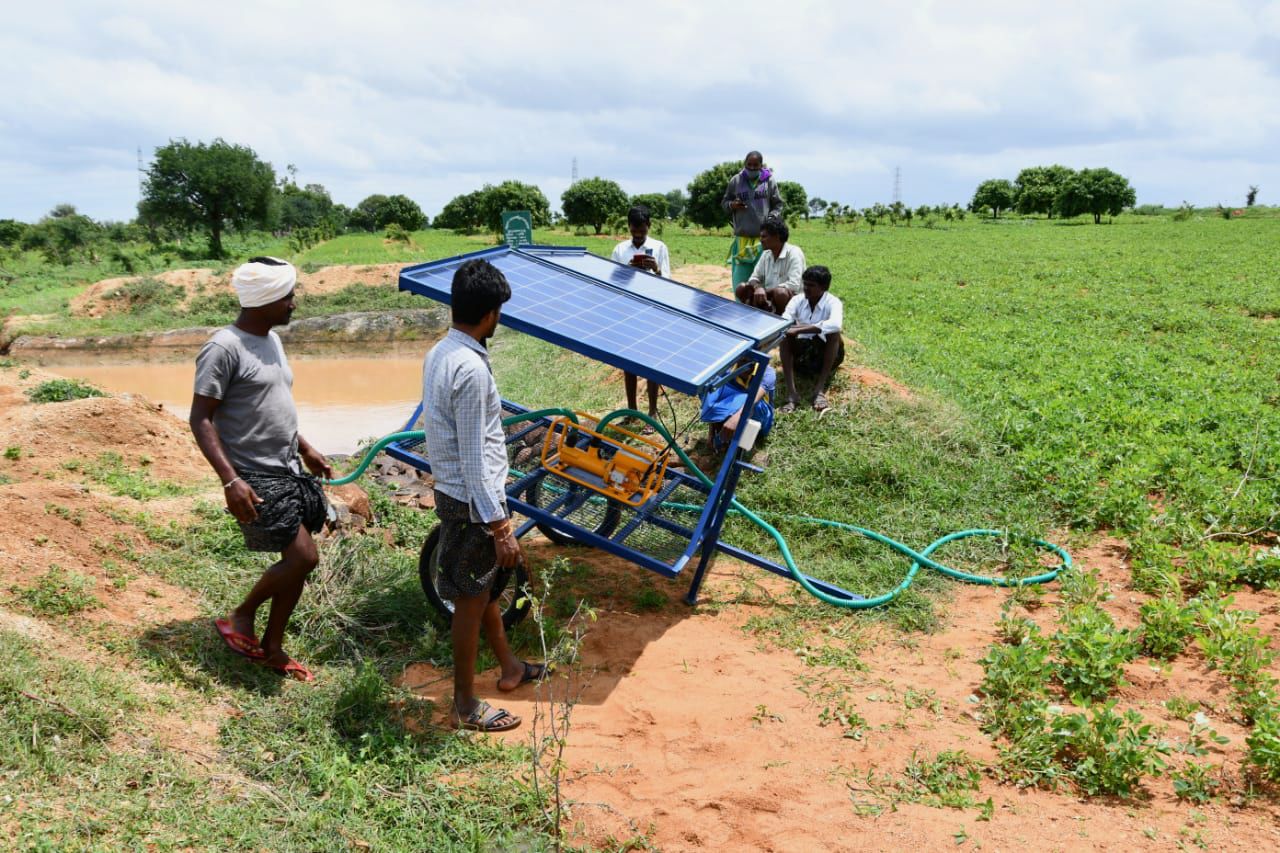
Another project was a collaboration with potters. SELCO observed, after several field visits, that many working potters in rural communities use very old kilns made from bricks, and which require a lot of wood. Their construction is quite simple, but a few problems in their design result in unnecessary waste during the firing process, and a lot of breakage during the firing. We decided to develop a new oven, one just as easy to build and use the same material, but which would consume far less energy.
We started the design process with research, which is generally how all projects at SELCO begin. We read a pool of academic research around traditional kilns from the Global South. Although the geographic and cultural context varies a lot between Latin America, Africa, and Southeast Asia, the socio-economic conditions are similar, or at least comparable. The studies were comprehensive, including details on the efficiency of each type of kiln, its fuel consumption, the size of objects that they could produce, and more. It was very interesting for me to change the references I was used to when working in Europe, which is exclusively focused on Western culture.
Drawing from all of this research, we then developed a manual delineating stages of the construction for an accessible kiln. It describes the making, the insulation, the different bricks, and how to fuel the kiln with wood, and arrange and extract the pottery. This manual was intended to be distributed to all communities that needed it.
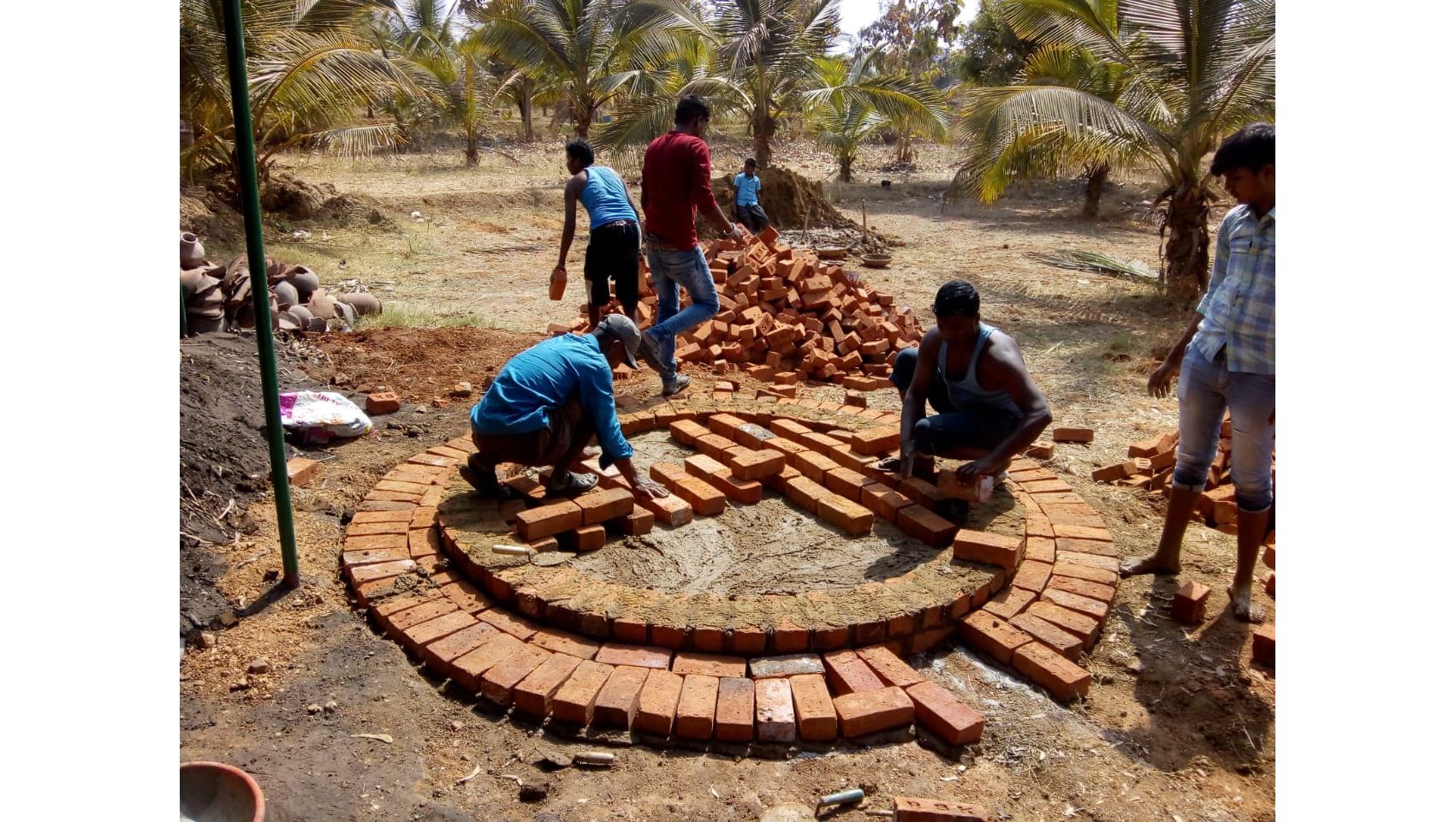
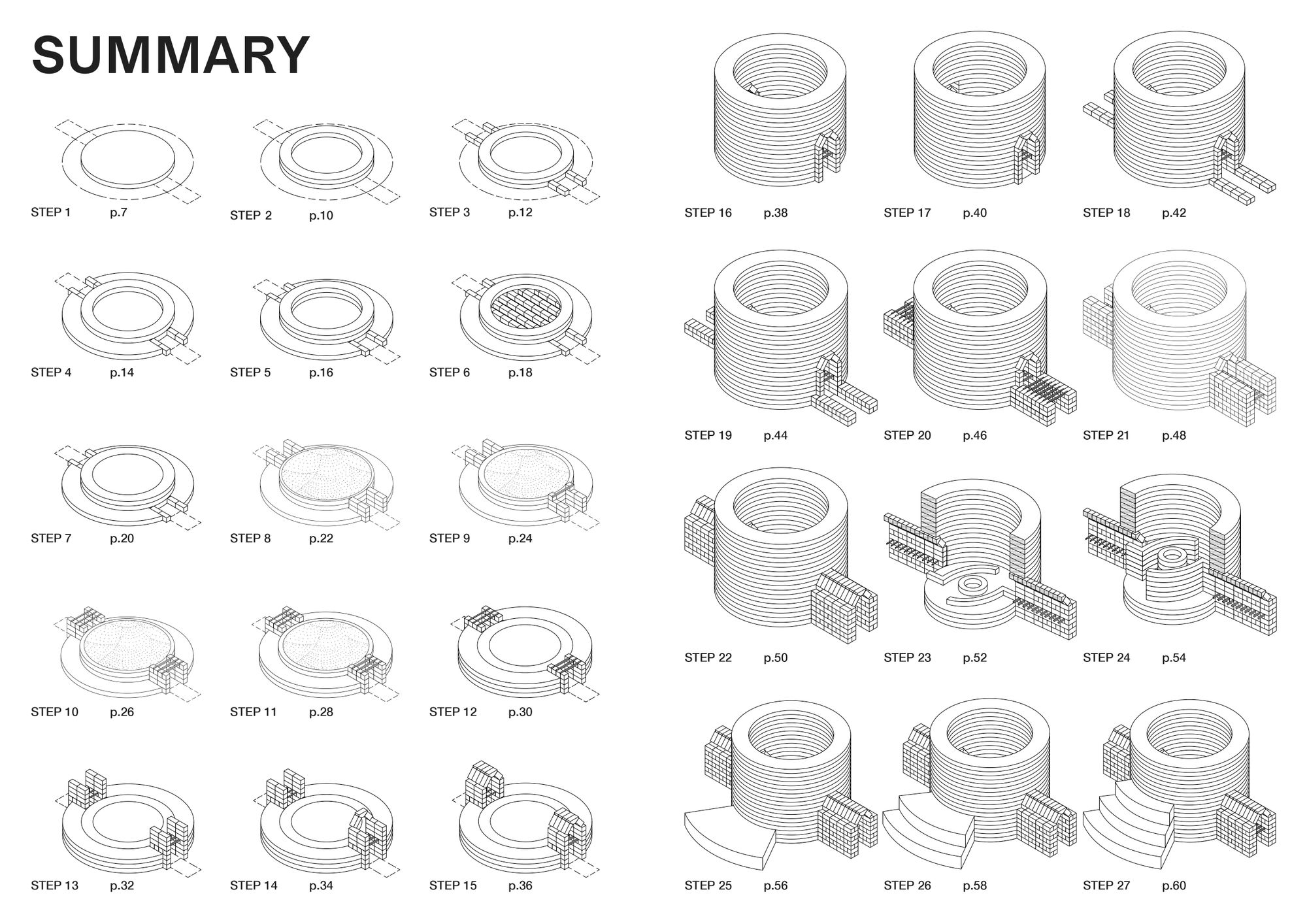
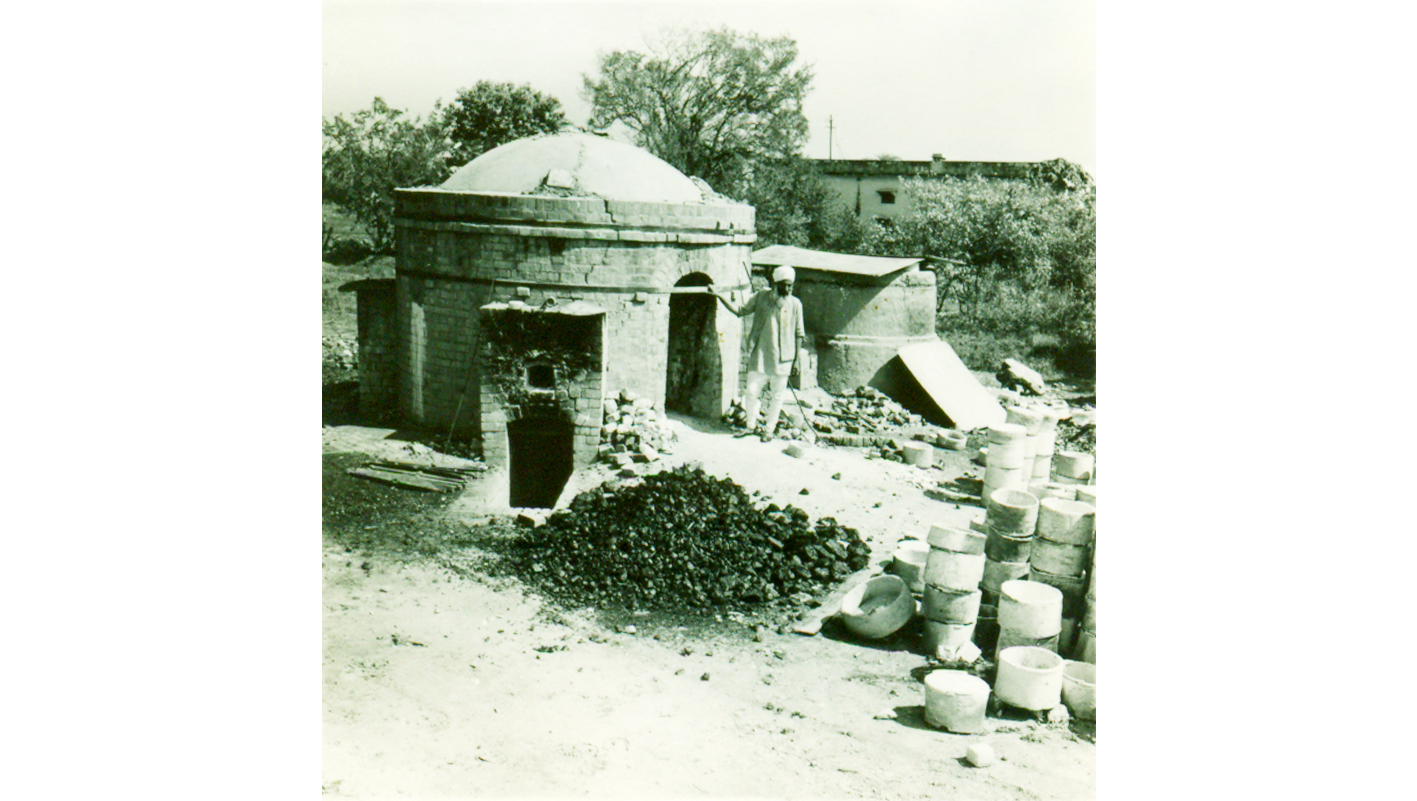
In a way, through this process, the designer becomes a bridge that allows for a recovery of ancestral knowledge...
Sort of. In this kind of situation, yes, the designer supports an old, ancestral practice, but the goal is to conceive the object in the vision of a particular community, and for their needs today. The designer functions as a bridge between that community, who holds ancestral knowledge, and current knowledge to which the community does not have access to, because they are marginalized, because they exist outside of academic and more broadly technical environments.
“The designer supports an old, ancestral practice, but the goal is to conceive the object in the vision of a particular community, and for their needs today.”
You arrived in Bangalore in February 2020. Shortly after your arrival, the Covid-19 crisis hit India. How was that experience?
It was a delicate period. The Bangalore office closed in the middle of March, and a week later came the complete lockdown of the whole city. Everything suddenly stopped. Bangalore is normally extremely active and lively; suddenly, there was no one on the street. The Swiss consulate contacted me two weeks after the start of the lock-down in India, and offered me a repatriation flight via the German government. I was told that I had two hours to register and leave! I accepted, received instructions, and 24 hours later I was in Switzerland, without having planned it at all. It was a pretty intense experience, and the kind of moment you witness the privilege of being a European citizen.
In Switzerland, I continued working for SELCO. The foundation was receiving many requests directly related to the Covid-19 pandemic, and very quickly, it provided answers. From Switzerland, I was involved in making manuals for masks, as well as designs for testing booths.
For the booths, the designs had to be developed in such a way that was tailored to individual communities’ particular needs. For example, some booths had to be transported by car. So these ones had to be dismantled, laid flat, and reassembled quickly so that they could be brought to remote villages, whether traversing through forests, or up a mountain. Other booths didn’t need this same treatment.
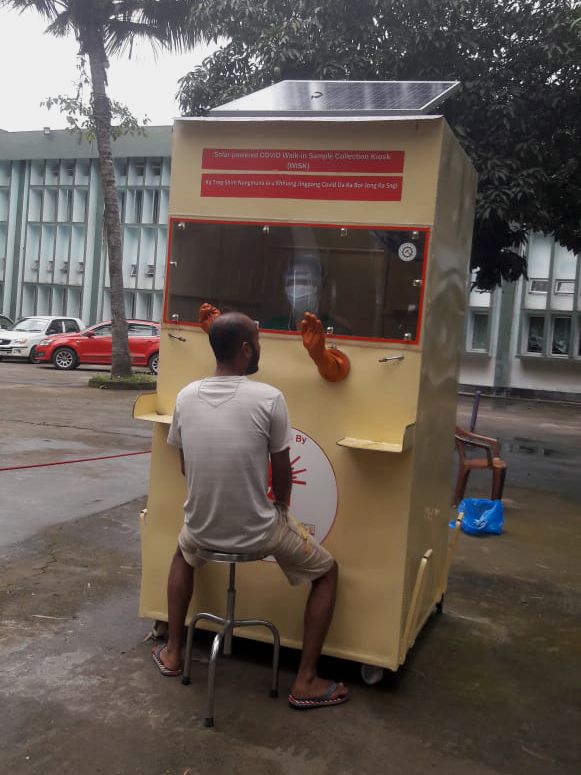

What insights have you garnered from your experience designing during the urgency of a pandemic, especially in your current context of Switzerland?
It’s during a crisis that the hidden edges and invisible structures of a system are revealed. What doesn’t work can be seen more clearly.
The pandemic put our production and distribution lines here in Switzerland and Central Europe to the test, and their failures are glaring. First, there was a lack of basic equipment, such as masks and hydroalcoholic gel. Then, companies showed a lack of flexibility when needing to apant and recognize the real-life issues at stake. In addition, we could see how, here in Switzerland for example, hospitals and all the other essential workers had to redouble their efforts during the pandemic, and how they were so endangered by that.
How is this even possible, that the most needed professions during this crisis are also the most vulnerable and precarious? Back in April, my friend Elio Panese and I wrote a text for his blog at the newspaper Le Temps, reflecting on how modes of production could be reshaped by social inventiveness in a Post-Covid-19 context. We questioned many things: The constant relocation of European companies, the disproportionate scale of industries, the exploitation of countries in the Global South, our dependence on a standardizing global economic system. All the problems that this crisis has exposed are in fact linked to the system in which we live. They were apparent before, but never recognized by those in power, since they benefit from exploitation. Exploiting the most vulnerable, standardizing and prioritizing needs—all of these things are necessary for the functioning of a neoliberal system. But they do not add up when managing a global pandemic.
Your text also responded to public debates taking place in Switzerland at the time, which called for a return to “business as usual.” Now with the second wave hitting the country, how do you see the government’s reaction?
With the pandemic, we saw a split that was already there become clearer. The split was between those who suffered and those who benefited from the crisis, and the so-called return to “business as usual.” That is to say, the return to exploitation.
This split was clearly visible in the government’s choices of what remains open, and what does not remain open. In the first lockdown, and in a similar way today with the second wave hitting, they decided to put in place very restrictive measures in parallel with looser measures. For example, this second wave forbids us to go to any museum, regardless of its size and attendance, but we can still travel across the whole country, and cross all the borders without trouble. These choices point to a global trend that is justified as measures of economic survival, but that are in fact clearly oriented. During the first lockdown, these measures have left the small stores, independent distributors and local shops in a critical situation—if not bankrupt. Meanwhile big companies, large distribution centers, and multinational corporations were the only places to remain open and available, giving them all the room to grow even more and swallow the surrounding businesses.
Inequality can also be observed across professions. The most exposed to the virus are the most devalued. Despite the fact that these professions (mostly occupied by women) are poorly paid, and often precarious, they are the most essential, even crucial, to cope with a crisis—but also during “normal” times. We can see with this second wave the same pattern being set up, reproducing its inequalities and endangering the same individuals thanks to rigid and arbitrary decisions benefiting a small group.
Back in April, you had hopes that the crisis might reveal a way out. You saw some possible paths to break away from this neoliberal paradigm, right?
Yes, for example, it was interesting for me to see how hospitals quickly reacted to the lack of equipment and found solutions using very simple resources. For example, some hospitals used diving masks, in combination with other items, to make respirators. Such flexibility did not exist before, especially in such a standardized and controlled environment as a medical hospital.
“Designing tools and objects with more flexibility, which make use of easily available resources, make it possible to respond to urgent needs with more speed.”
Designing tools and objects with more flexibility, which make use of easily available resources, make it possible to respond to urgent needs with more speed. But for this, it is necessary that professionals from different fields meet, exchange, and talk with one another. This is not happening, and instead we are moving towards more specialization, and more segregation between the trades and professions. This is happening to respond to an ever-growing demand for standardization, stimulated by production scales, which are even more disproportionate.
And now, what do you think, for the present and the future?
It’s pretty hard to say. We were hopeful back in April when we wrote this article. Everything—the lockdown, the measures, the social transformation—were then so new and radical, that we said to ourselves, “of course, in the end, the system will be different.” But ultimately, maybe not that much? European countries quickly put things back in place, re-boosting the economy with measures that have impacted those who also suffered the most from the crisis. It seems like we haven’t learned anything from our dependence on major exporting countries, our lack of flexibility, our lack of consideration for the professions which were most needed during the crisis. The return to normalcy in Switzerland, was very brutal. The neoliberal system is so powerful, it carries such strong inertia that nothing can stop it. If even a three-month lockdown across Europe that nearly brings down the global economy down can't stop it, what can?
It’s an impasse...
Here in Switzerland and Europe in general, designers, architects, and allied professions, who had a role to play in fighting this crisis, also had great difficulty in getting to the heart of the matter. I asked myself: Why weren't architects and designers mandated to restructure hospitals, to redesign their architecture, its access corridors, where to place affected patients, how to organize the reception, how to think about the gel distribution? These questions have been addressed by the hospitals themselves, not by the professionals who could have been extremely useful. In a way, the COVID-19 crisis shows how, here in Europe, the liberal design professions are completely detached from the real needs of the population. This problem might come from individual’s lacking a willingness to change, but the source of it remains in design education. Most schools still teach design in the same way they did 50 years ago, so from the perspective of a society blinded by the promises of an emerging neoliberalism, where design is purely and simply a commercial tool.
But it’s interesting to see how some countries in the Global South have responded differently to the pandemic. In Morocco, for example, the reaction was very quick. They have succeeded in making masks available at affordable prices and distributing them nationwide. Solidarity among the population meant that they found solutions to this crisis. In Morocco—I think it is fairly representative of North Africa and even Africa in general—the flexibility and resourcefulness of the people have shown greater efficiency compared to Europe. Here, in contrast, we were stuck until finally perfume and alcohol companies started to make hydroalcoholic gel, just to give one example. It’s flexibility that we need. The flexibility to do what is necessary. There is comfort, there is aesthetics, but there is a lot more to design than that. We limit design a lot in its capabilities, when we could be able to do a lot more with it, and a lot better.
Nina Paim is a Brazilian curator and design researcher. Her work usually involves many others and revolves around notions of directing, supporting, and collaborating. She was born in Nova Friburgo 168 years after Swiss settler-colonialists displaced the indigenous tribes of the puris, coroados, and guarus. Love and fate brought her to Basel, where she seeks to transmute her daily immigrant anger into care practices for making space. She is a co-founder of Futuress.
An earlier version of this interview was also published in the accompanying publication of the 2020 Swiss Design Awards, titled Failure Is Not an Option.

















